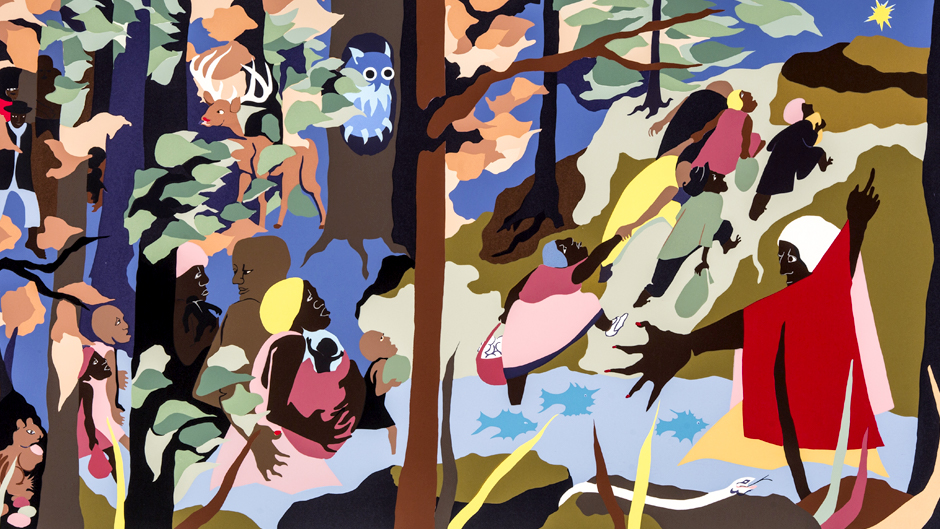On the eve of the anniversary of Juneteenth, the Lowe Art Museum took the opportunity to look back at art history in order to march forward in the nation’s fight for racial justice.
As Jill Deupi, director and chief curator of the Lowe Art Museum, explained during her opening remarks of the “Jacob Lawrence: Medium and Message” virtual discussion on Thursday, June 18, Juneteenth commemorates the official end of slavery in the United States.
“Unfortunately, the emancipation, in and of itself, failed to live up to the dreams and promises of Abraham Lincoln—a new nation conceived in liberty and dedicated to the proposition that all men are created equal,” she noted. “Rather, centuries of inequity, injustice, greed, fear, hatred, and rapacious dominion kept and continue to keep that promise and those dreams beyond the reach of many of our fellow Americans.”
Before introducing the evening’s speakers, Deupi invited more than 100 attendees to join her for 8.46 seconds of silent reflection to honor the memories of George Floyd, Ahmaud Arbery, Brianna Taylor, and every other person whose life has been taken from them because of the color of their skin.
Christina Larson, Andrew W. Mellon fellow for academic engagement; Roxane Pickens, director of UM Libraries Learning Commons and director of American Studies; and Will South, an independent art consultant, took turns discussing Lawrence’s impressive career as an artist and highlighted the historical significance of his work.
“Lawrence was one of the most important artists of the 20th century, so learning about American history through the lens of his work provides us with a forum for looking back so that we can look forward with greater understanding,” said Larson.
The main piece of artwork examined by the group titled, Forward Together, was created by Lawrence in 1997, three years before his death.
“Lawrence was truly the creator of scenes where he not only directs the narrative, but actually connects all the pieces in a way that's innovative, exciting, dynamic, and forceful,” said South.
“The image depicts Harriet Tubman, who was known as the Moses of the enslaved people, leading them out of slavery and into freedom,” Larson pointed out.
“Getting across this divide is not easy,” added South. And if you went back to 1941, he was talking about struggle. It's a theme that stays with him throughout his life. So, from this one piece, you can pick up a lot of cues about the life and work of Jacob Lawrence.”
Pickens emphasized that African American storytelling is a universal gesture of people seeking to preserve history and memory.
“Lawrence is an artist looking to carry on the heritage, traditions, and legacies of his people, said Pickens. “In this composition in particular, he's emphasizing the extraordinary kinship and relational connections that are required to keep people moving forward together.”
Lawrence’s work was shaped by the Harlem Renaissance, a celebration of African American culture through visual art, literature, poetry, theater, music, and dance.
“Harlem Renaissance artists believed that artistic cultural expression was going to be the path forward for African American communities and the way to demonstrate their dignity and integrity,” added Pickens. “Lawrence was deeply invested in showcasing and reminding us of the United States’ legacy of identifying injustice and calling a collective to action toward social change.”
The History, Labor, Life: The Prints of Jacob Lawrence exhibition has been extended and will be on view at the Lowe Art Museum through December 6, 2020. A virtual version of the exhibition is available here.

